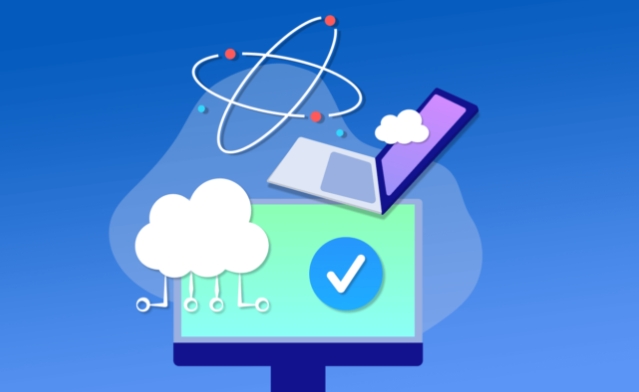This article will explore the many ways cloud services have integrated into our daily lives and how they are transforming the way we live, work, and play.
What Is the Cloud?
The "cloud" refers to a network of remote servers that store, manage, and process data over the internet. Unlike traditional methods where data is stored on physical devices (like hard drives or local servers), the cloud allows users to access information and applications from virtually anywhere, as long as there’s an internet connection.
Cloud services are typically provided by large companies like Amazon Web Services (AWS), Microsoft Azure, and Google Cloud. These companies offer a wide range of services, including data storage, software applications, and computing resources, all available through the internet.
How Cloud Services Are Used in Daily Life
The cloud powers a variety of services and applications that make our personal and professional lives easier and more efficient. Here are just a few examples of how cloud technology influences our day-to-day activities:
1. Storing and Sharing Photos and Files
One of the most common uses of cloud services in daily life is for storing and sharing photos, videos, and documents. Services like Google Drive, Apple iCloud, and Dropbox allow users to store photos, videos, and files securely in the cloud. This not only frees up space on devices but also ensures that important documents and memories are safely backed up and accessible from any device.
- Example: You take a photo on your phone during a vacation, and it’s automatically backed up to Google Photos or iCloud, where it can be accessed from your laptop, tablet, or other devices without needing to manually transfer the file.
2. Streaming Music and Movies
Cloud services have revolutionized how we consume entertainment. Platforms like Spotify, Apple Music, Netflix, and YouTube rely heavily on cloud computing to stream content to users. Rather than storing entire libraries of songs or movies on your devices, you can access a virtually unlimited amount of media content from the cloud at the touch of a button.
- Example: You don’t need to download music or movies to your device anymore. Simply open Spotify or Netflix, and access your favorite songs, albums, or shows directly from the cloud.
3. Remote Work and Collaboration
Cloud-based productivity tools like Google Workspace (Docs, Sheets, Slides), Microsoft 365 (Word, Excel, PowerPoint), and Slack have transformed the way we work, making remote collaboration easier and more effective. Cloud services allow teams to work together in real time, share documents, track projects, and communicate seamlessly, no matter where they are located.
- Example: A team of colleagues in different cities can all contribute to a document or project simultaneously using Google Docs in the cloud, without worrying about version control or saving files to their own devices.
4. Online Shopping and E-commerce
Cloud computing powers e-commerce platforms, enabling us to shop online with ease. Retail giants like Amazon, eBay, and Shopify rely on cloud infrastructure to provide fast, secure, and scalable online shopping experiences. The cloud also allows for personalized shopping recommendations, secure payment processing, and real-time inventory tracking.
- Example: When you shop on Amazon, the cloud handles everything from processing payments to managing the inventory, ensuring a smooth and personalized shopping experience.
5. Health and Fitness Tracking
Wearables like Fitbit, Apple Watch, and Garmin track your health and fitness metrics and sync the data with cloud-based apps. These apps analyze your activity levels, sleep patterns, heart rate, and other data, offering insights and recommendations to help you lead a healthier life.
- Example: After a workout, your Apple Watch syncs your data to iCloud, allowing you to review your progress, set new fitness goals, and monitor your health trends over time.
6. Cloud Gaming
Cloud gaming is an emerging trend that allows gamers to play high-quality video games without needing powerful hardware. Services like Google Stadia, NVIDIA GeForce Now, and Xbox Cloud Gaming stream video games directly to devices like smartphones, tablets, or low-performance laptops via the cloud. This eliminates the need for expensive consoles or gaming PCs.
- Example: You can play high-definition games like Fortnite or Cyberpunk 2077 on your tablet without needing to download or install the game locally—everything runs in the cloud.
7. Smart Home Devices and Automation
Cloud services play a pivotal role in the functioning of smart home devices. Gadgets like smart thermostats (Nest), voice assistants (Amazon Alexa, Google Assistant), and security cameras (Ring, Arlo) all rely on cloud computing to function. These devices collect data, make decisions, and provide remote access via the cloud.
- Example: Your Ring doorbell uses cloud services to store video footage and allow you to view it remotely on your smartphone, no matter where you are.
8. Financial Management
Managing personal finances has never been easier thanks to cloud-powered financial tools. Services like Mint, QuickBooks, and PayPal store and manage your financial data in the cloud, giving you access to your bank accounts, transaction history, budgeting tools, and more, anytime you need it.
- Example: Using Mint, you can track all your bank accounts, credit cards, loans, and investments in one place, with the information securely stored in the cloud for easy access and analysis.
9. Education and Learning
Cloud-based learning platforms like Google Classroom, Khan Academy, and Duolingo offer flexible, on-demand learning opportunities. These services allow users to access educational resources, take courses, and even participate in virtual classrooms, all through the cloud.
- Example: A student can use Google Classroom to access assignments, collaborate with peers, and submit work from any device with internet access, all while the data is securely stored and backed up in the cloud.
Why Cloud Services are Transforming Daily Life
The beauty of cloud services is their ability to provide seamless, scalable, and accessible solutions for both personal and professional activities. Here are a few key reasons why cloud technology is transforming our lives:
- Convenience and Accessibility: Cloud services allow you to access data, files, and services from anywhere, anytime. Whether you’re on the go, at home, or in the office, the cloud ensures you stay connected.
- Cost-Effective: Many cloud services offer free or subscription-based pricing, making them affordable for individuals and businesses alike. You only pay for what you use, which can be a more cost-effective solution than maintaining physical infrastructure.
- Data Security: Cloud service providers often implement advanced security measures, such as encryption, firewalls, and multi-factor authentication, to keep your data safe.
- Collaboration and Efficiency: With the rise of cloud-based tools, collaborating with others has become easier than ever. Sharing, editing, and working on projects together in real time has improved productivity across industries and in personal activities.
Conclusion
Cloud services have already become an integral part of our everyday lives, and their influence continues to grow. From personal data storage to entertainment, work, fitness, and even home automation, the cloud is revolutionizing how we interact with technology and manage our daily tasks.
By leveraging cloud services, we gain convenience, efficiency, and flexibility, enabling us to live smarter, work faster, and stay connected at all times. As cloud technology continues to evolve, it will undoubtedly bring even more exciting possibilities to enhance our daily lives.







